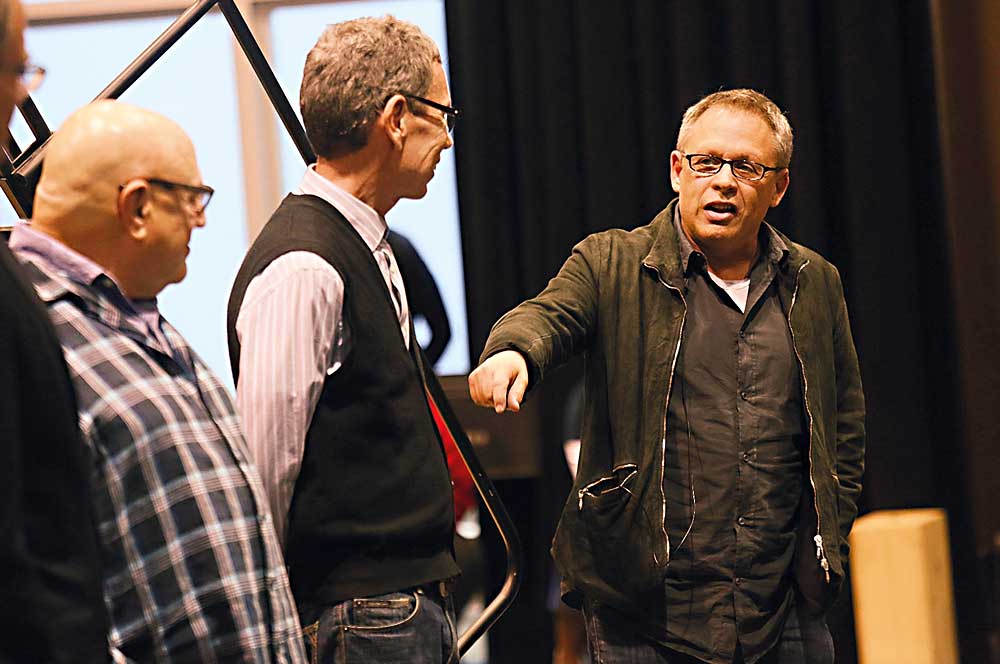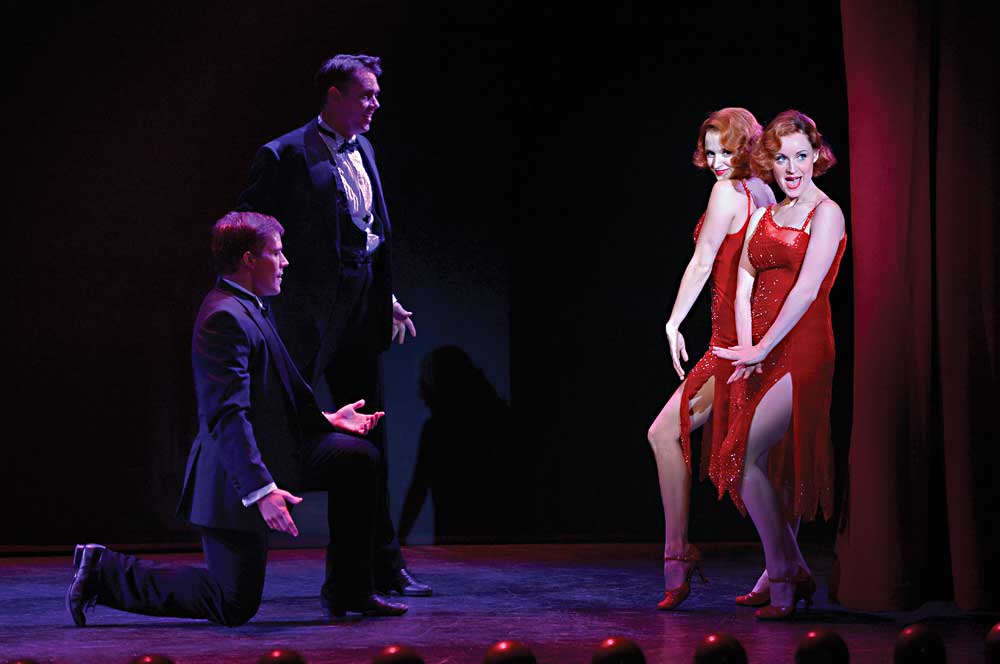
Still, the show’s principal focus remains its lead actresses, who must perform literally joined at the hip, often while dancing in production numbers. Besides that obvious physical challenge, Krieger’s nacreous, eclectic music—equal parts pop and pastiche—and Russell’s plain-spoken, tightly compressed lyrics require optimal vocal range and interpretation. The two sisters’ personalities differ—outgoing Daisy yearns for stardom, introverted Violet for domesticity—but both dream of life as a separate entity.
In short, the roles require dual tours de force. And in Erin Davie’s Violet and Emily Padgett’s Daisy, that’s exactly what the La Jolla production received. It’s not just that these two Broadway babies are essentially similar-looking enough to be sisters and, in costumer Paul Tazewell and hair designer Charles G. LaPointe’s expert hands, look virtually identical onstage. What inexorably grabbed this observer (and, judging by the audible reactions overheard throughout, the audience) was the unforced clarity and delicately detailed inner lives that Davie and Padgett brought to their characters. The pair’s lyrical timbres and nuanced acting enlivened Daisy and Violet, with myriad unexpected grace notes. From the introductory “Like Everyone Else” onward, Davie’s keenly understated sensitivity and Padgett’s perfectly pitched acerbity felt exactly right, with their heartfelt, airborne “Who Will Love Me as I Am?” and “I Will Never Leave You” leaving the house awash in wholly earned tears.
From a technical standpoint, the show unfolded beautifully on David Rockwell’s multi-tiered scenic design. No sooner had Robert Joy’s Sir and company growled out the first bars of “Come Look at the Freaks” than the ensemble of side show attractions made it plain that this Side Show would be inverting our notions of normalcy. Tazewell outdid himself with such creations as the 3-Legged Man, Half Man/Half Woman, etc., and Jules Fisher and Peggy Eisenhauer’s lighting was incisive and atmospheric.

Which brings the focus back to Condon, whose cinematically fluid yet acutely theatrical work showed us where to focus without telegraphing, recalling Harold Prince in Sweeney Todd mode. Anthony van Laast’s choreography was another major asset, most notably in “Ready to Play” and “1 + 1 = 3,” respectively a show-stopping specialty between the girls and four partners, and a post-Sondheim commentary on certain Act 2 romantic complications.
Although many observers found the old songs superior to the new material, to this reviewer that preference, though understandable, misses the point. Condon, Krieger and Russell have in effect fashioned an entirely new show, one whose old-school delights sometimes dovetailed with fresh psychological insights, not least Javier Ignacio’s resonant Houdini, whose “All in the Mind” solo laid considerable groundwork for narrative conflicts to come.
It’s here, ironically enough, that the show’s principal liability lies: in a divide between content and form. Its themes—what constitutes normalcy, the gap between interior dreams and external realities, everyone’s yearning for acceptance—are universal, at times flirting with profundity. Yet the scenario didn’t necessarily delve as deeply into the intriguing questions it raised. For example, while both Terry and Buddy’s motivations are now clearer than before, the aforementioned “1 + 1 = 3” (though a striking visual achievement), felt less definitive at exploring Buddy’s same-sex attraction in character terms. At times, the expanded Sir, with which Joy valiantly grappled, almost seemed out of a Victorian melodrama.
Yet whenever the show focused on Daisy and Violet’s interior lives, a deeply moving, tacitly electric charge enveloped the venue. That alone justifies this nervy reimagining. It should be fascinating to see what further emendations Side Show receives in June, when Washington, D.C., has its own opportunity to come look at the freaks.
David C. Nichols is a performer-turned-arts writer based in Los Angeles.


